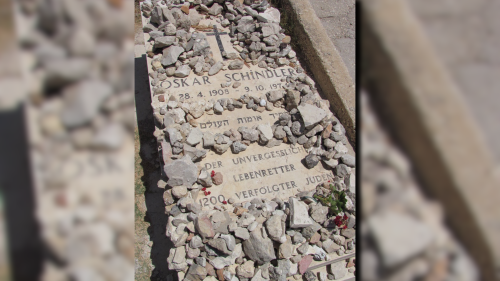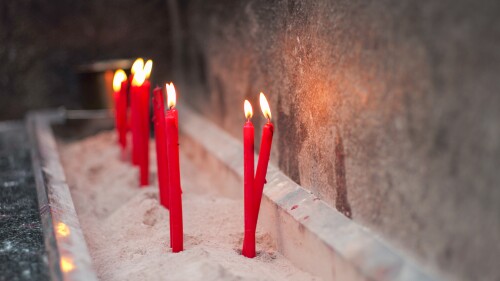During the eulogy of the eight slain students of the March 6 terrorist attack at Mercaz HaRav yeshiva school in West Jerusalem, highly-respected Rabbi Ya’akov Shapira made, for the average gentile, a rather elusive allusion regarding the attack: “The murderer did not want to kill these people in particular, but everyone living in the holy city of Jerusalem. The murderers are the Amalek of our day, coming to remind us that Amalek has not disappeared, just changed its appearance.” In similar terms, Jerusalem’s mayor Uri Lupolianski said: “They [the victims] came to grow stronger in the Torah and in the course of their studies they were murdered by the present day Amalek, who came back in [the Hebrew month of] Adar to remind us he has not gone. He has simply changed his face.”
This otherwise obscure biblical figure holds great symbolism in Jewish history. In Jewish scriptures and later Talmudic writings, he is often depicted as the archetypal enemy of the Jewish nation. Accordingly, the greatest enemies of the Jewish people—such as Hitler—are often referred to as “Amalek.”
During the Egyptian exodus, the nation of Amalek, the “Amalekites,” attacked the Hebrews; the latter won: “Then the Lord said to Moses, ‘Write this as a memorial in a book and recite it in the ears of Joshua, that I will utterly blot out the memory of Amalek from under heaven.’ And Moses built an altar and called the name of it, The Lord is my banner, saying, and ‘A hand upon the throne of the Lord! The Lord will have war with Amalek from generation to generation.’” (Exodus 15-17.)
Some Israeli Jews have seen the surrounding Palestinians as the descendants—literal or spiritual makes no difference—of the Amalekites, who are to be fought “from generation to generation.” This has been a minority view, often held by ultra-orthodox extremists, but evocations of King Amalek and his nation are becoming more commonplace.
The other day I had an interesting conversation with Gershon Greenberg, co-editor of Wrestling with God: Jewish Theological Responses During and After the Holocaust and an authority on Jewish symbolism and what he calls “meta-history.” I discussed with him the significance of this latest terrorist strike—claimed or endorsed by a number of terrorist organizations—and the increasing use of the word “Amalek.” According to Greenberg, that the epithet “Amalek” is becoming more mainstream in describing the “enemy"—particularly by highly authoritative religious figures such as Rabbi Shapira—is indicative of a coalescing of the different political leanings into a more unified, long-term “right-wing” response. This could translate into more popular support for aggressively dealing with the Palestinians.
This may be even more ominous when we consider that many allusions to mass killing in the Jewish scriptures often pertain to the Amalekites: “Now go and strike Amalek and devote to destruction all that they have. Do not spare them, but kill both man and woman, child and infant, ox and sheep, camel and donkey.” (1 Sam. 15:2-3.) Failure to literally obey this purging cost Saul his kingship (1 Sam. 28).
If these biblical excerpts appear ruthless, boding of mass killing, it is well to remember that Islam has (and Islamists often quote) similar texts directed at the Jews. The difference, however, is that whereas Hebrew scriptures speak of Amalek—not Arabs or Palestinians per se, leaving room for interpretation—Islamic texts are unambiguously directed at the Jews, such as the famous apocalyptic hadith that states that the End Times shall only be ushered in when the Muslims fight and kill the Jews (Sahih Muslim, B40N6985).
On both sides, the significance of words and their allusions should not be overlooked or underestimated in everyday politics, particularly when uttered by people who not only take them seriously, but wield power.







